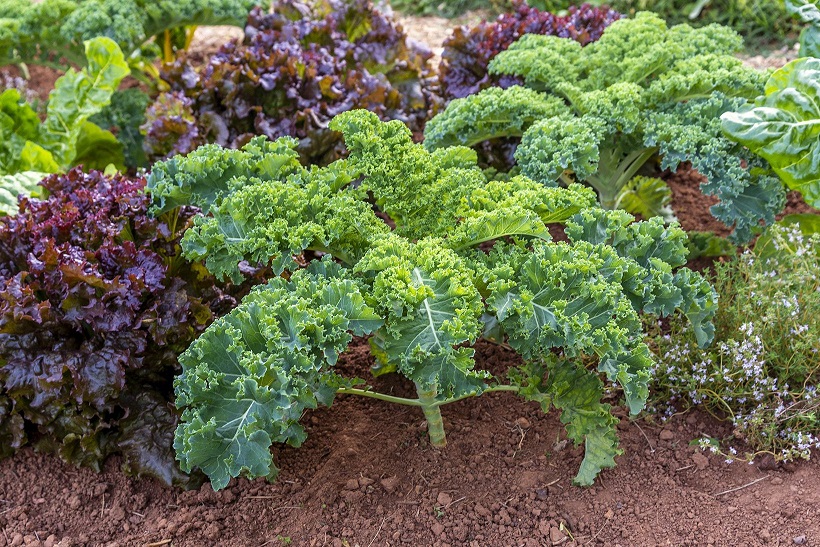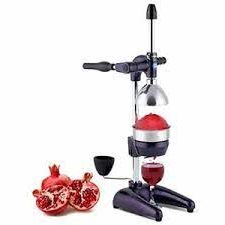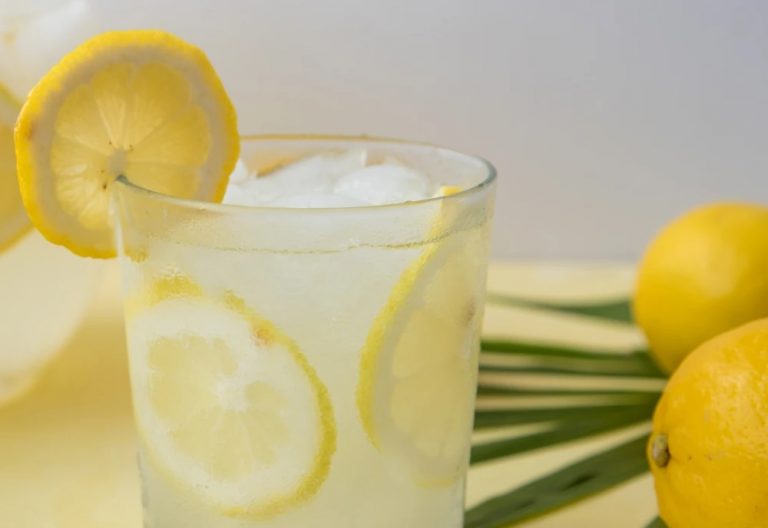Best Kale for Juicing: Top Selections for Amazing Juice
Kale is a leafy green vegetable that is related to cabbage, broccoli, and Brussels sprouts. It can be used in many delicious recipes like salads or even as an ingredient for juices. If you want your juice to taste fresh, healthy, and tasty, then adding kale would make it the best choice, but how do you know which type the best kale for juicing is?
There are so many different types of kales now available these days! Not only does this create confusion for the consumer, but it also means that the quality of these kales can vary greatly between brands. This article will provide you with a list of tips on how to choose the best kale for juicing.
What is Kale?
Kale is a vegetable that is part of the cabbage family. It is a dark, leafy green that has become very popular in recent years for its many health benefits. There are different types of kale, each with its own unique characteristics. When choosing kale for juicing, selecting the right type for your needs is important.
Kale is a leafy green vegetable that is often used in juices and smoothies. It has large, dark green leaves and a slightly bitter taste. Kale can be cooked by steaming or sauteing. Kale comes in a variety of colors, including pink-burgundy. The coloration of kale is largely dependent on the cultivar; some are more purple or red than others.
Benefits of Juicing Kale
Kale juice is a powerful source of nutrients and vitamins that have amazing health benefits. The juice is packed with antioxidants, fiber, vitamins C and K, iron, calcium, and more. These nutrients work together to improve your overall health and well-being. In addition, kale juice is packed with vitamin K, which is essential for blood clotting, necessary for healing wounds, and can improve your overall health. Some of these benefits include promoting healthy vision and blood clotting and providing the body with energy.
Kale is a great vegetable to eat because it has a high level of fiber which is beneficial for your health. Additionally, kale is low in calories and has anti-inflammatory properties.
Additionally, Kale juice can be made with various fruits and vegetables to taste. For example, apple kale juice would have a sweet and sour taste, while cucumber kale juice would be more refreshing and less flavorful. Experiment with different flavors to find the perfect combination for you!
Kale is a great vegetable to juice because of its high levels of fiber and nutrients. Fiber helps with digestion, and the nutrients can help with weight loss. Kale is also low in calories, making it a good choice for people who are trying to lose weight.
What is Best Kale for Juicing?
Kale is a cruciferous vegetable that is perfect for juicing. It is low in calories and high in nutrients, making it the ideal vegetable for those looking to improve their diet. However, it is important to select the right variety when choosing kale for juicing. There are several different types of kale available, each with its own unique set of benefits.
Curly Leaf Kale
Curly leaf kale is a variation of the common green vegetable kale. It has a less bitter taste and is thus more popular with people who are new to eating kale. Curly leaf kale is one of the most popular types of kale because it is the easiest to introduce into your diet. In addition, it has a thicker texture than other types of kale, so it doesn’t taste as bitter.
Curly leaf kale is a great green to juice because it turns a bright shade of green when cooked. The leaves are also tender and have a mild flavor that won’t overpower the other flavors in your juice.
Curly Leaf Kale is a type of kale with tough stalks and bright green leaves. It is often used in juices because the leaves are easy to remove, and the taste is milder than other types of kale. Curly leaf kale can also be remedied by steaming it for a few minutes before juicing it.
Lacinto Kale
Lacinto kale is a variety of kale that has high levels of calcium. This makes it perfect for those who are looking to increase their intake, especially seniors. In addition, Lacinto kale has deep green leaves that are around three inches wide when fully mature, while the leaf itself is deeply textured.
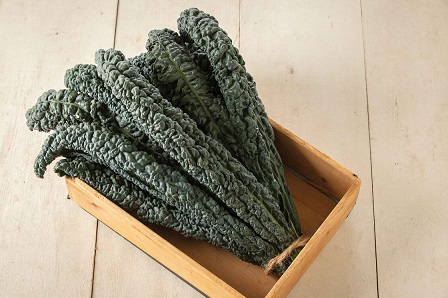
Lacinto kale is a dark green leafy vegetable that is easy on the digestive system. It is high in fiber, vitamins A and C, and minerals such as potassium. Lacinto kale can be eaten raw or cooked.
Siberian Kale
Among the different types of kale, Siberian Kale is the most compact, and it yields the highest amount of kale. This variety grows in cold climates and has a sweet, earthy flavor.
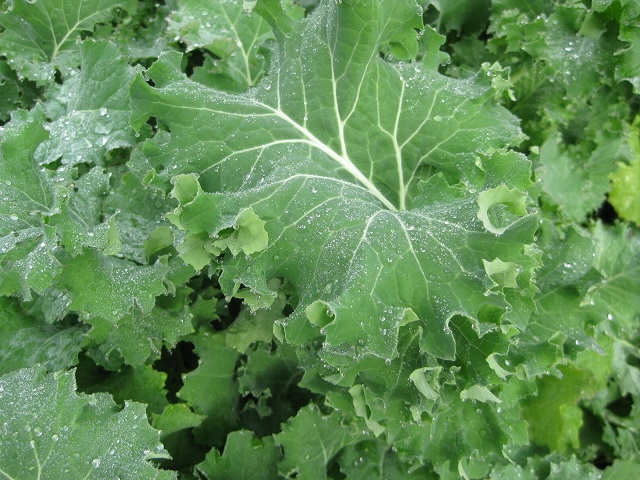
Siberian kale is a dark green leafy vegetable with purple stems that is closely related to collard greens. It has short, sturdy leaves and a slightly bitter taste. It can be eaten raw or cooked and is high in vitamins A and C. Siberian kale is one of the best greens to juice for those who have arthritis or other joint pain. The anti-inflammatory effects of Siberian kale help break down the hard tissues so your body can absorb all the nutrients better.
The Siberian kale is a very interesting-looking variety of kale. It is tender and easy to chew through, making it a good choice for juicing.
Ornamental Kale
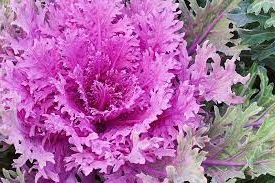
TheOrnamental kale is a type of cabbage that is grown for its decorative leaves. It has a similar appearance to red Russian kale, but the leaves of ornamental kale are usually a lighter green or white color. The most distinguishing feature of ornamental kale is the purple veins that run through the leaves.
Red Russian Kale
Red Russian kale is a variety of kale with deep purple leaves and easy to juice. It is high in antioxidants and vitamins A, C, and K. Red Russian kale is a milder type than other types of kale. This makes it perfect for eating raw because it doesn’t have a strong flavor. It also has curly leaves that are purple on the outside and pinkish-red on the inside.
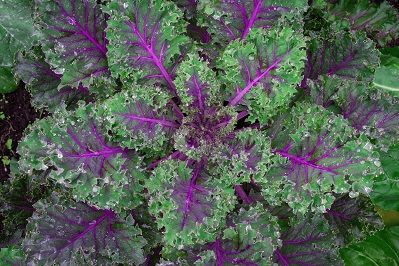
Red Russian kale is a great option for juicing because it is easy to chew but can be tough if juiced through a juicer first. If you are looking for a kale type that will give you a good dose of fiber, Red Russian kale is the right choice.
Factors to Consider When Buying Kale for Juicing?
There are many different types of kale, and each has its own unique flavor and texture. When choosing kale for juicing, it is important to keep in mind the following measurements: the thickness of the stem, the color of the leaves, and how curly or smooth the leaves are.
For example, Curly leaf kale is more bitter than other types of kale, but this bitterness can be remedied by steaming the kale. Additionally, it’s important to consider the size and shape of the leaves when purchasing kale for juicing.
The most important measurement to remember is the organic produce with vibrant colors and no blemishes on the leaves. Additionally, avoid any wilted or browning leaves, as these will not make for a good juice.
What to Juice With Kale?
Kale is a great vegetable to juice because it is high in vitamins and minerals. In addition, kale juice helps to improve blood pressure and cholesterol levels, and it has been shown to reduce the risk of heart disease in people who have high blood pressure or cholesterol levels. Kale is a great source of nutrients and has a high nutritional value. It is a versatile vegetable that can be juiced with other fruits and vegetables. Kale juice is a great source of nutrients and can be made with any type of fruit or vegetable juice. This gives people the flexibility to create their own unique recipes or use the provided recipes.
Kale is a healthy green vegetable that can be juiced with other vegetables to make a nutritious drink. Kale is high in fiber, vitamins A and C, and minerals such as potassium and calcium. It is best to mix it with other vegetables such as carrots or cucumbers to add flavor and nutritional value when juicing kale.
This juice recipe includes watermelon, melons of all kinds, grapes, lemon, orange, pear, plums, apricots, peaches, and raspberries. Kale is a great vegetable to juice with other fruits because it has a mild flavor that doesn’t overpower the taste of other fruits.
Related Questions
How much kale to juice?
When juicing kale, you will want to start with 1 cup of kale leaves for every 300ml of water. This will give you a good mixture of flavor and nutrients. Of course, you can always add more or less kale, depending on your preference.
How about eating kale pulp from juicing?
Kale pulp is the fiber that is left over after juicing kale. This insoluble fiber doesn’t get digested and can cause constipation problems if you eat too much of it. So it’s best to avoid eating kale pulp if you are trying to improve your digestion.
What to mix with kale juice?
When juicing kale, you can mix it with various other fruits, vegetables, and juices. This will give you a variety of flavors and nutrients. Good combinations include apple and ginger, carrot and orange, cucumber, and mint. You can also experiment with different combinations to find what you like best.
Can you drink kale juice every day?
Kale is a great vegetable to juice, and most people will benefit from having dark leafy greens like kale at least once each day. Kale is high in fiber, vitamins, minerals, and antioxidants. It also has anti-inflammatory properties, which can be beneficial for overall health.
Drinking green juice every day is a great way to get your body the vegetables and fruits it needs. Kale is a great vegetable to juice because it is packed with nutrients and vitamins. However, not all kale is created equal. There are different types of kale, and each has its own unique set of benefits. Therefore, it’s important to choose the right type of kale for juicing to maximize its nutritional value.
What is the best type of juicer for kale?
There is no one perfect juicer for everyone. Instead, many different types of kale can be juiced. You can use a centrifugal, masticating, or twin-gear juicer to make your juice. It is important to choose the right type of kale for your juicer to get the most out of it.
Different types of juicers have different benefits and drawbacks, so choosing the right one for your needs and preferences is important. Some factors you may want to consider include ease of use, speed, size, price, and whether or not the juicer can handle a wide variety of fruits and vegetables.
The best investment you can make for this purpose is an Omega NC800HDS Juicer. This machine will allow you to extract the most juice from your produce, making the most of your investment.
How much Vitamin K do you get out of kale juice?
Kale is a leafy green vegetable that is often used in juices and smoothies. It is a good source of many vitamins and minerals, including vitamin K. Vitamin K is important for maintaining bone health and has other benefits as well. When choosing kale for juicing, it is important to pick the right variety. There are several types of kale available, and each has its own unique nutrient profile.
One cup of kale juice provides 547 mcg of Vitamin K. This nutrient is important for blood clotting and bone health. It is found in many different foods, but kale is an excellent source. When choosing kale for juicing, be sure to select a dark green variety with small leaves.
How to store leftover kale juice?
When you are done juicing, it is important to store the leftover kale juice in an airtight container. This will help keep the juice fresh and prevent oxidation. You should also make sure there is no room for oxygen in the container, as this will also cause oxidation.
It is important to drink it within 24 hours when you juice kale. This is because kale juice quickly loses its nutritional value and potency once it is juiced. If you have leftover kale juice, store it in the refrigerator in a sealed container.
Should you boil kale before juicing?
Kale is a tough vegetable and takes more time to juice than other vegetables. Therefore, you should boil kale before juicing it in order to make it easier to juice.
Boiling kale before juicing is a common practice as it breaks down the cell walls and leaches nutrients into the water. This can make the juice more nutrient-dense and flavorful. However, if you are looking for high-volume juice, boiling may not be the best option, reducing the amount of kale you can juice.
Boiling kale before juicing is a good idea, but only to a certain extent. Heating the kale will help break down some of the tough fibers and make it easier to juice. However, if you boil it for too long, it will start to lose its nutrients.
What is the difference between Curly kale and Tuscan kale?
There are many different types of kale, but the two most common are curly kale and Tuscan kale. Curly kale is the most common type and has a more traditional kale flavor. Tuscan kale is a bit sweeter and has a more delicate flavor. It is also slightly less bitter than curly kale.
How do I prepare kale for juicing?
Kale is a great vegetable to juice, but it is important to choose the right kale and prepare it correctly. Kale must be thoroughly washed before juicing to remove any dirt or pesticides. It is also important to cut out the tough stem from the kale leaves before juicing.
When selecting kale for juicing, it is important to choose the best leaves. Look for leaves that are dark green and free of rot. Scrutinize the leaves and remove any rotten parts before juicing.
Conclusion
Kale is a great vegetable to juice because it is high in fiber, vitamins, minerals, and antioxidants. Juicing kale produces a high level of health benefits without any unpleasant side effects. You can choose the best kale for juicing by looking for dark, leafy greens with a firm texture. There are many different types of kale that you can use for juicing. Each type has its own benefits and drawbacks, so choosing the variety that best suits your needs is important. Some of the most popular varieties include curly kale, Red Russian kale, and lacinato kale.

